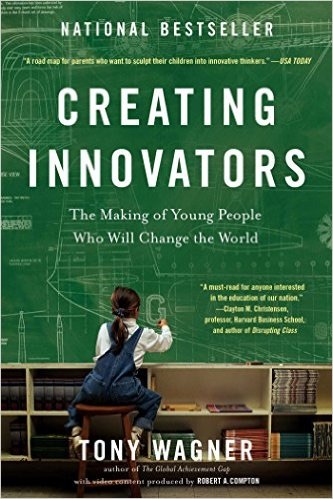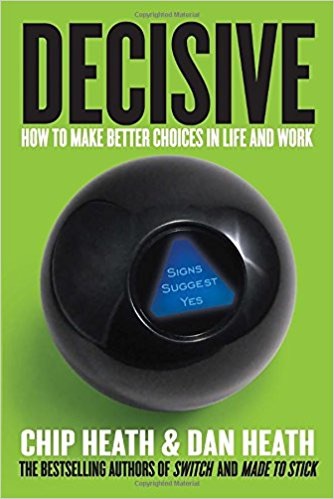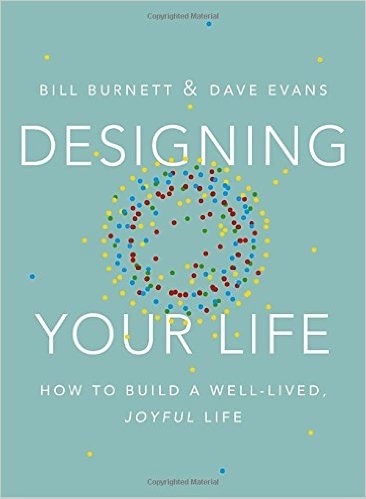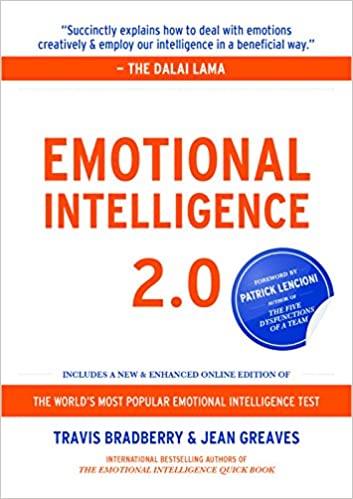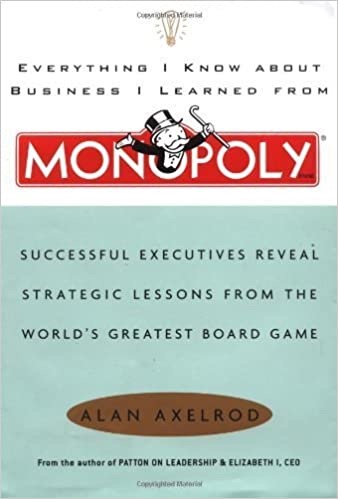Archive for the ‘Business Books’ Category
Wednesday, July 20th, 2022
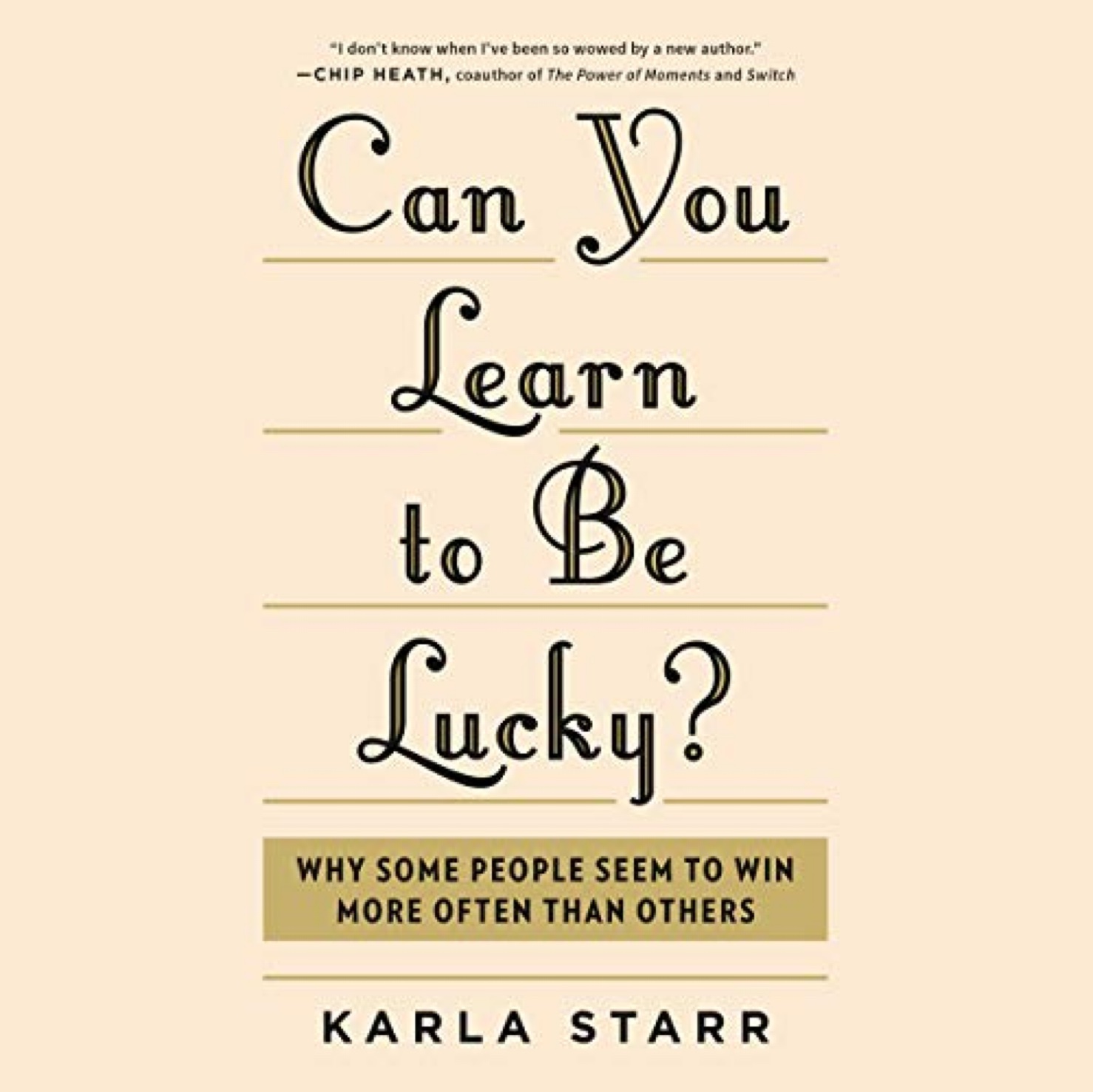
Can You Learn to Be Lucky? Why Some People Seem to Win More Often Than Others by Karla Staff explains in detail how you can increase your chances of being lucky and therefore successful. We all experience good luck and bad luck as we go through life, but with Karla’s help, we can make good luck more likely and take better advantage of it, and better survive and learn from our bad luck. This book belongs in every professional learning library.
Introduction
- This book is about navigating life’s hidden patterns. While there is no way to account for every variable influencing our situation, this doesn’t make the world entirely unpredictable. We need to see the world as understandable and manageable. If you feel unsure about your ability to handle the future, anxiety will follow. Regardless of your merit, frugality, and faith, elements of chance will always be part of your life. This is where luck comes in. A bias toward action, however, can help as doing nothing can lead to learned helplessness. You can’t stumble on to something good by sitting down.
1. Best in Show: Why Lucky Timing Is out of Our Hands
- Studies show that your chances of winning a subjectively scored event are better if you are judged near the end. They also show that prisoners get the best deals if they are judged right after lunch or a break. If you are part of a contest or are interviewing for a job, do what you can to be near the end of the process. Then do what you can to be memorable and emphasize what makes you special or unique. Frame losses as learning experiences and don’t take them personally. And if you want to score with the gender of your choice at a bar, stay until closing time.
2. The Charlie Brewer Principle: How That Warm, Fuzzy Feeling Leads to Luck
- The focus is Charlie Brewer whose father and grandfather were star quarterbacks. Is it any wonder that the coach looked to him to be his next quarterback? If you have some advantage due to your family’s circumstances be sure to leverage it. However, if you are rich and good looking you might get away with being a dick, but it’s not a good strategy in the long run. Charlie’s story deals with confirmation bias. This is a concept you need to understand on the road to luck.
- The other big idea here is availability. By consistently showing up you increase your chances to be lucky. If you are always there you will seem safe, which correlates with luck. The more people see you the more they are likely to like you as long as you are nice. Proximity counts. People who live on the bottom floor have more friends. Kids who sit in the middle of the room are more popular. Your attire is very important. For example, women who show up in a nightclub dress are not likely to be seen as highly capable. Make a good first impression and know that it takes time and effort to build a good reputation.
3. Bitches in Glasses: The Occasionally Unlucky Side of Intuition
- We use our feelings to decide and rationalize our choices after the fact. There are things we can control like grooming, attire, facial expressions, posture, what we say, tone of voice, and body language. We have some control over our body shape and size. We have little control over the shape of our face and our height, and they both count for more than they should. Be sure to act in a friendly manner and smile when you meet someone. Act like you are happy to see them. This you can control and it will help make a good first impression.
- We tend to map traits from people we know on to people we meet who look similar. The feelings we currently feel also impact our impression of the people we are with. Women who don’t smile are judged more harshly than men who don’t smile. People with square jaws and wider faces are more likely to be promoted. Life is indeed unfair. What you can do is throw your hat into the ring every chance you get, use an easy-to-pronounce version of your name, and avoid edgy jokes and weird online IDs.
Posted in Book Summaries, Business Books, Education Books, Leadership Books | Comments Off on Can You Learn to Be Lucky? Why Some People Seem to Win More Often Than Others by Karla Staff
Monday, December 5th, 2016
Creating Innovators: The Making of Young People Who Will Change the World by Tony Wagner (© 2012, Scribner: New York, NY) explores what parents, teachers, and employers must do to develop the capacities of young people to become innovators. Tony profiles innovators to identify patterns in their childhood that made them what they are. He shows how to apply his findings to education and tells parents how to compensate for poor schools. Keys include collaboration, interdisciplinary problem-solving, and intrinsic motivation. Sixty original videos are included that you can access via a smartphone. Go to Creating Innovators for a trailer.
A Primer on Innovation
- Innovation is about the process by which new things take place. It involves using novel and creative ways to create value via new products, services, business models, or processes. It involves valuable original ideas or insights that you somehow implement. It’s creative problem solving applied to the real world. Incremental innovation significantly improves products, processes, or services. Disruptive innovations create a new or fundamentally different product or service that disrupts markets and displaces dominant technologies.
- Innovations can be technical like Apple’s iPod, iPhone, and iPad. They can also be social like the nonviolent strategies of Gandhi and M. L. King.
Skills of Innovators/Nature of Creativity
- Tony offers the following as the main skills needed: 1) critical thinking and problem solving 2) collaboration across networks and leading by influence 3) agility and adaptability 4) initiative and entrepreneurship 5) accessing and analyzing information 6) effective oral and written communication 7) curiosity and imagination. It is also necessary to imagine the world from multiple perspectives, see all aspects of a problem, be optimistic, experiment to explore problems with a bias towards action, work with others as the day of the lone genius seems to be over. For places like Google and Apple, intellectual curiosity is more important than smarts. They also want people who will take control of a situation rather than waiting to be lead.
What Is Needed
- Creativity is a habit and like any habit, it can be either encouraged or discouraged. Teachers that value the right answer more than provocative questions tend to drum the curiosity out of students early on. Creativity can be encouraged or discouraged.
- Tony cites work of Teresa Amibile’s who says that creativity or innovation has three components. They are expertise, creative thinking skills, and motivation. She believes that motivation is the most important and that intrinsic motivation has more impact than extrinsic motivation. Tony adds that childhood play should lead to adolescent passion and adult purpose. They are the three interrelated elements of intrinsic motivation. He notes that a disproportionate number of innovative people attended Montessori schools where play is an important part of the curriculum.
What Is Needed
- Knowing how to find those things you are interested in and that motivate you is way more important than specific things you study. This implies that you should put a buffet of opportunities in front of children and let them engage in unstructured play. If a child finds an interest, it should be encouraged.
- Tony tells of a course at Stanford where students work in teams to solve open-ended problems. Most high school and college courses that feature individual competition, specific content, and extrinsic incentives like grades and GPA. What is needed are courses that feature teamwork, multidisciplinary approaches, and the intrinsic incentives of exploration, empowerment, and play.
Tags: Creating Innovators, Innovation, Tony Wagner
Posted in Book Summaries, Business Books, Education Books, Leadership Books | Comments Off on Creating Innovators: The Making of Young People Who Will Change the World – by Tony Wagner
Sunday, November 3rd, 2013
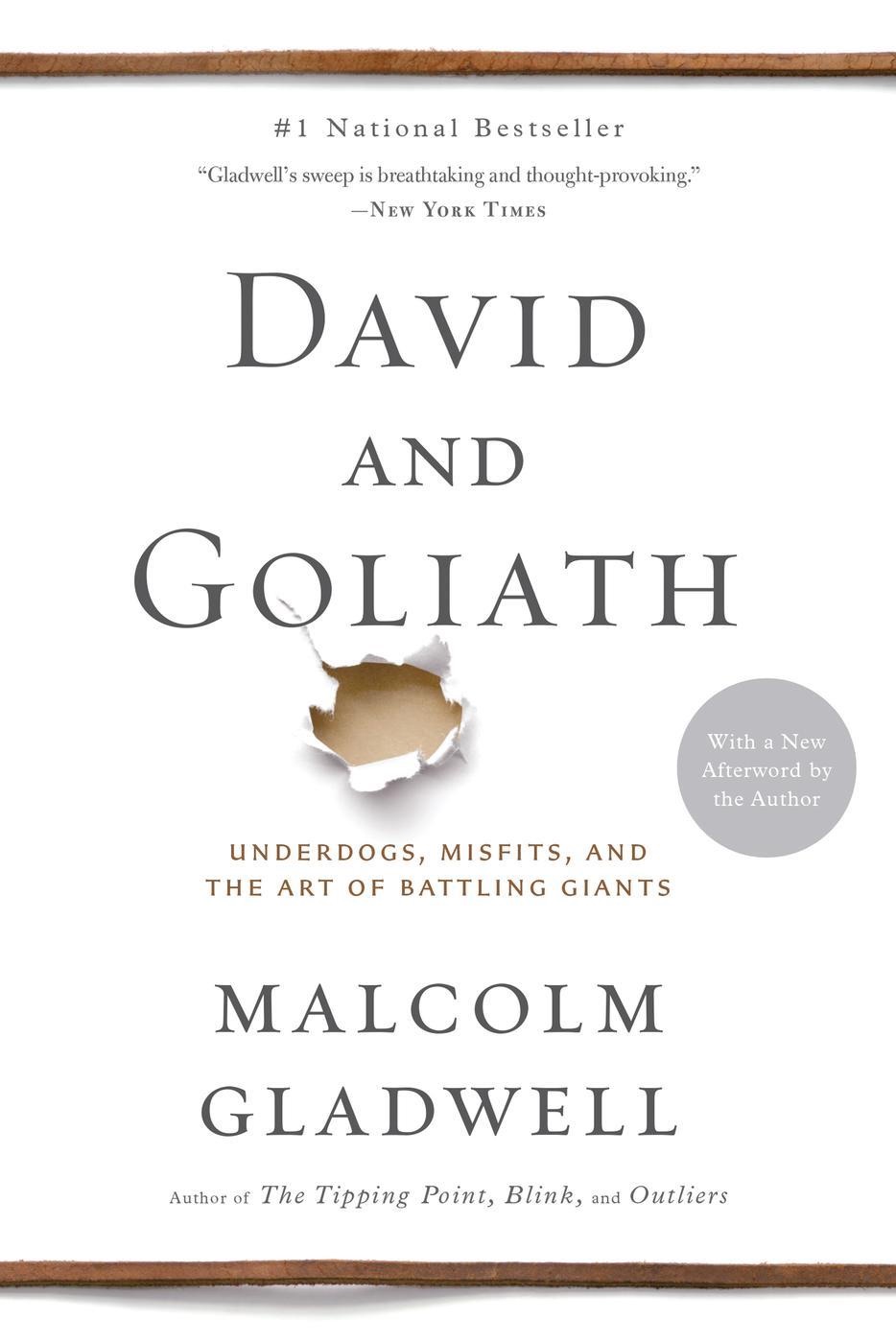
David and Goliath: Underdogs, Misfits, and the Art of Battling Giants is Malcolm Gladwell’s fourth best-selling book to be summarized here. I’ve been a big fan ever since I summarized The Tipping Point. If you like to give books as gifts, please click below and get copies for yourself and your favorite bookworms.
Why Goliath was the Underdog
- In the story of David and Goliath, it turned out that it was Goliath’s size that made him a better target for David’s sling. Warfare of the time featured cavalry, infantry, and a third group that fired projectiles like arrows and rocks. The infantry represented sitting ducks as they were relatively stationary compared to the cavalry. The humble infantryman, however, had better odds taking on a charging horse with a spear to the belly. Calvary could take on the projectile boys as they were moving targets that were much harder to hit. This is like a game of rock, paper, scissors were the odds depend on the matchup. For Goliath, facing a slinger like David was like facing a modern rival with a handgun.
Use Your Assets, Hide Your Weaknesses
- Gladwell uses the David and Goliath story as a metaphor for how we should not always assume that the people who seem to have the upper hand really do. He tells a number of stories of how people who didn’t seem to have a chance won the day. One features a man from India who decided to coach his daughter’s basketball team. His girls were not especially tall or skilled, but he changed the odds by changing how the game was played. He realized that the other teams didn’t defend over half the court. When he put in a full-court press that lasted the entire game, he found that there were enough turnovers which lead to easy baskets to allow his team to triumph over superior talent.
- There is also the story of Lawrence of Arabia whose troops were successful because they took advantage of their main asset, which was speed. This showed that material resources are not always an advantage. Rather than trying to improve on your weaknesses, sometimes it is better just to hide them.
- Even wealth can be a disadvantage when it comes to raising kids. Malcolm tells the story of a successful businessman who worked in his father’s scrap metal yard. It was hard, dirty work and it made him realize that he needed to work hard to make sure he would enjoy a better future. It was his family’s very lack of wealth that gave him the qualities that allowed him to be wealthy today. Ironically, he now has a problem as his kids want for nothing. He fears they won’t develop the qualities that made him successful. While poverty can be stressful and debilitating, it seems that just enough wealth can make you relatively happy while still letting you develop desirable qualities. The same also seems to work for class size as classes that are too big or too small have their own downsides.
Posted in Book Summaries, Business Books, Education Books, Leadership Books | Comments Off on David and Goliath: Underdogs, Misfits, and the Art of Battling Giants by Malcolm Gladwell
Thursday, March 28th, 2013
Decisive: How to Make Better Choices in Life and Work by Chip & Dan Heath shares research and cool stories that show how our decisions are disrupted by an array of biases and irrationalities. They go on to introduce a four-step process designed to counteract these problems. Their fresh strategies and practical tools will enable you to make better choices at work and beyond. If you want to increase your chances of making the right decision at the right moment, this book is for you. Click the icon at the bottom of any page to buy this important book for yourself and your key colleagues.
The Heath Brothers
- Chip Heath is a professor at the Graduate School of Business at Stanford University. Dan Heath is a senior fellow at Duke University’s Center for the Advancement of Social Entrepreneurship (CASE). They are the authors of the bestsellers Switch and Made to Stick.
- While working on this book, the authors asked that I forego my usually summary approach and do a more traditional book review highlighting a few useful concepts and to use my educational expertise to show readers how to apply them to their life. I have tried to honor this request and thank them for their input.
Introduction
- Chip and Dan start with the key core difficulties that negatively impact our decision making. We think we know everything there is to know prior to making a decision. We also tend to be overconfident in our knowledge of the future and seek only data that confirms what we believe. We let our emotions get in the way, and often present choices in either/or terms.
- Doug: In education, I’ve seen each of these whenever decisions were made whether by myself as principal or by a collaborative process. It is important to challenge your own thinking and say things like “you may have a point” when a colleague disagrees. Everyone knows that they aren’t always right, but it’s hard for many people to investigate the possibility that they are wrong prior to committing to a decision. They are more likely to dig in and defend their position.
Ask: What Else We Could Do/Buy?
- When dealing with budget issues, you should always ask “what else could we buy” if we didn’t buy the item(s) we are considering? A good example today is what could we buy with all the money we are spending on textbooks and standardized testing?
- The vanishing options test would also allow you to consider what to do with an administrative position when someone leaves. Always ask “how else you could accomplish the person’s function, and is there some part of what they are doing that doesn’t need to be done.” I have found that for administrators, the job will expand to fill the day with tasks that aren’t mission critical.
Posted in Book Summaries, Business Books, Education Books, Leadership Books | Comments Off on Decisive: How to Make Better Choices in Life and Work, Heath Bros.
Tuesday, January 17th, 2017
Designing Your Life: How to Build a Well-Lived Life by Bill Burnett & Dave Evans offers time-tested advice for becoming the best version of yourself possible. The advice here can help even if you are already fairly happy with your life. Their website also contains useful resources and supplements to the book.
Bill Burnett & Dave Evans
- Bill is the executive director of the Stanford Design Program and co-founder of the Life Design Lab. He is also a former leader of Apple’s PowerBook product line and CEO of a design consultancy. Dave is co-founder of the Life Design Lab, a lecturer in the Stanford Design Program, a management consultant, and formerly a co-founder of Electronic Arts.
Introduction
- Since only 27% of college grads end up in a career related to their jobs, it’s clear that most end up designing their careers and all need to design their non-career life. While this book is for all of us, it’s the two-thirds of workers unhappy with their jobs and the 15% who hate their work that need it the most. Life is full of problems, and solving them is what design is all about. A well-designed life is constantly creative, productive, changing, evolving, and there is always the possibility of surprise. Life then is about designing something that has never existed before. Keep in mind that passion is something you develop after you try something and get good at it. A key point is to never measure yourself against anyone. The five necessary mindsets covered are 1. Be Curious 2. Try Stuff 3. Reframe Problems 4. Know it’s a process and 5. Ask for help.
1. Start Where You Are
- You need to know where you are and what design problems you are trying to solve. In design thinking, the authors put as much emphasis on problem finding as problem solving. Deciding which problems to work on may be the most important decisions you make. The authors define a class of problems known as gravity problems. These are problems like trying to overcome gravity in that they are not actionable and therefore can’t be solved. The key is to not get stuck on something you have no chance of succeeding at.
- At the heart of this chapter is an activity that lets you take stock of your current status. You are asked to rate from 0 to 100 how you feel about the criteria of 1) Your Health, 2) Your Work, 3) Your Play, and 4) Your Love. As far as love is concerned you should consider all the different types of love you experience, not just love from a spouse or significant other. When you complete this task you will have a framework and some data about yourself. Nex,t you are asked to answer these questions. 1) Write a few sentences about how it’s going in each area. 2) Ask yourself if there’s a design problem you’d like to tackle in any area. 3) Ask if your problem(s) is a gravity problem.
Posted in Book Summaries, Business Books, Leadership Books | Comments Off on Designing Your Life: How to Build a Well-Lived Life by Bill Burnett & Dave Evans
Wednesday, August 18th, 2021
Drive: The Surprising Truth About What Motivates Us by Daniel Pink is a must-read for educators and parents alike. Dan summarizes current research and does a great job turning it into interesting and understandable prose that educators can apply to their practice. Every school should have this on the shelf.
Three Types of Motivation
- 1.0 – The basic motivations we need for survival
- 2.0 – Motivations based on direct rewards and punishments. Such carrots and sticks are typically financial in this context. They work for jobs that are routine, which are often the jobs that can be sent offshore or done by a computer.
- 3.0 – Intrinsic motivation, which is conducive to creativity. This allows you to do things for the satisfaction of doing them rather than any monetary reward. Examples include open source software, Wikipedia, learning to play a musical instrument, or doing a puzzle. It is important for nonroutine (heuristic) jobs. In these jobs rules are loosely defined, which requires creativity.
Carrots and Sticks Don’t Always Work
- Pink sites 128 studies that lead to the conclusion that tangible rewards tend to have a substantially negative effect on intrinsic motivation. This is one of the most robust findings in social science and one of the most ignored. (Doug: Educators should check out Alfie Khon’s 1993 book, Punished by Rewards.)
- Studies show that rewards and punishments can extinguish motivation and diminish performance. They focus behavior, which can crush creativity and they can crowd out good behavior. In some cases, they can lead to cheating, shortcuts, unethical behavior and lead to addiction. They can foster short-term thinking at the cost of long-term results.
Carrots and Sticks Aren’t All Bad
- Rewards do not undermine people’s intrinsic motivation for dull tasks where there isn’t any motivation to be undermined. To increase chances for success you need to: 1) Offer a rationale for why the task is important 2) Acknowledge that the task is boring 3) Allow people to complete the task their own way. Another way to offer extrinsic rewards for creative work is to give the reward after the job is finished. Care must be taken so that such rewards don’t become expected. In general, praise and specific positive feedback are less corrosive than cash and trophies (Doug: That means stickers for you elementary teachers)
Tags: Daniel Pink, Drive, Motivation
Posted in Book Summaries, Business Books, Education Books, Leadership Books | Comments Off on Drive: The Surprising Truth About What Motivates Us by Daniel Pink – Updated Summary
Monday, June 8th, 2020
Emotional Intelligence 2.0 by Travis Bradberry & Jean Greaves (the book can be found succinctly explains how to deal with emotions creatively and how to employ your intelligence in a beneficial way. There is strong evidence that EQ can be improved with effort and this book can direct that. Higher EQ leads to success on the job and at home so this is a book that everyone can use to forge a better life.
1. The Journey
- All information from your senses has to pass through the emotional part of your brain (the limbic system) before it gets to the rational or thinking part of your brain (the frontal cortex). It’s the communication between your emotional and rational brains that is the physical source of emotional intelligence or EQ. It is emotional intelligence that explains why people with high IQs don’t consistently outperform people with average IQs.
- The purpose of this book is to help you increase your EQ. You start by taking the Emotional Intelligence Apprasal online. To see your scores you will need the code at the end of the book, which is only good for one person. This appraisal provides a baseline against which you can judge your improvement. This is a new feature in version 2.0. You can also retake the test after you finish the book to see how much you have learned.
2. The Big Picture
- Emotional awareness and understanding are not taught in school, but self-knowledge and emotional mastery are required to make good decisions on the job and in life. We have many words to describe our feelings yet all emotions are derivations of five core feelings: happiness, sadness, anger, fear, and shame. Here we find twenty different words to describe each. When emotions are intense they can highjack your rational thinking and cause you to react reflexively. Your reaction to these trigger events is shaped by your personal history. Enhanced EQ can help you recognize triggers and let you respond in a rational manner.
- We all possess the qualities of personality, EQ, and IQ. Of the three, EQ is the one most amenable to improvement. It is also the foundation of a host of critical skills like time management, decision-making, and communications. It is the strongest driver of leadership and personal excellence. It is highly correlated with high-performance and salary regardless of the job. The rest of the book will help you improve your EQ.
3. What Emotional Intelligence Looks Like: Understanding the Four Skills
- The four EQ skills come in two pairs known as personal competencies and social competencies. The first includes self-awareness and self-management. This is where you stay aware of your emotions and manage the resulting behavior and tendencies. Social competencies include social awareness and relationship management. This is where you work to understand other people’s mood, behavior, and motives. Emotions always have a purpose as they shape your reactions to the world around you.
- Self-awareness is a foundational skill; when you have it the other skills will be easier to use. Self-management is dependent on your self-awareness as it gives you information that you can act on rationally rather than reflexively. Social awareness is also foundational as you need to pick up on the emotions of others so you can better manage your relationships. You need to listen well rather than thinking about what you are going to say next when another person stops talking. Relationships require you to understand others and are based on how you treat them over time. This chapter also contains positive and negative examples of all four skills.
Posted in Book Summaries, Business Books, Education Books, Leadership Books | Comments Off on Emotional Intelligence 2.0 by Travis Bradberry & Jean Greaves (the book can be found here)
Monday, May 11th, 2020
Everything I Know About Business I Learned From MONOPOLY: Successful Executives Reveal Strategic Lessons From the World’s Greatest Board Game by Alan Axelrod is a handbook on how to use the world’s most popular board game to think about, explore, and rethink the nature of business and the doing of business. It offers insight and provocation, which is a good starting place. If you are finding more time for board games, be sure to dust of your MONOPOLY board after you read this book.
Introduction
- Parker Brothers introduced MONOPOLY in 1935 and within one year it became the best seller in the US. This was in the heart of the great depression when business wasn’t working too well. Then a game that modeled capitalism struck a chord. It allowed people to experience success and failure in their own living rooms. The game is just complicated enough to be realistic and fun. It was developed from business school simulations for the general public by Charles Darrow who was turned down the first time it offered it to Parker Bros. He kept selling it himself and Parker Brothers got wind of his success. Ask any business person what got them interested in business and they are likely to say MONOPOLY. Like the rest of the book, this chapter contains quotes from famous business people.
Part I: There Are Rules – 1.The Object of the Game
- The objective of MONOPOLY is to become the wealthiest player through buying, renting, and selling property. You need to be aggressive when it comes to acquiring property. Being cautious might keep you in the game longer before you go bankrupt. Caution is not a winning strategy.
2. All Things Being Equal
- Unlike the real world, each MONOPOLY player starts with the same amount of money ($1,500) at the same place. Beyond that things are unequal based on each player’s abilities. In real life, there are great disparities regarding where we start. A combination of innate ability, ambition, parental wealth and parenting skills, and luck determine where we end up. Like the real world, luck is also a factor in MONOPOLY via the roll of the dice and the luck of the draw (Community Chest and Chance cards).
3. A Roll of the Dice
- Luck implies some controlling power. Chance implies randomness. Confident people anticipate success. If you feel like a winner, you will behave like a winner, you will make moves that winners make, you will, therefore, improve your luck. It’s your attitude and self-confidence that will predispose you to make your own luck. Our lives are full of familiar events mingled with a few surprises. In MONOPOLY there is a lot of familiar territory accompanied by chance. You can’t control the dice, but it’s good to know the odds. Out of 36 possible combinations. Six give you a seven. Five give a six or an eight. Four give you a five or a nine. Three give you a four or a ten. Two give you a three or an eleven, and only one gives you a two or a twelve.
4. Passing GO
- Passing Go and collecting $200 is like working and collecting a salary. Ideally, you make enough to meet your needs and maybe enough to save some. In MONOPOLY you can’t live on your salary alone and you have to put the money you take in at risk. Unless you pull the go-to jail card, collecting your GO salary should be part of your strategy.
5. The Rule of Opportunity
- The big idea here is unless you have a positive, purposeful, affirmative reason to say NO, say Yes to every opportunity that presents itself. In MONOPOLY you need a very good reason not to buy an unowned property you land on. The rules state that if you don’t choose to purchase an unowned property you land on, the Banker is supposed to sell it at auction. Many people don’t follow this rule, but you should as it makes the game much more dynamic.
6. Facing Reality and Paying Your Debts
- The key point is not to learn to avoid risk but to accept risk as necessary to success. Having accepted the necessity of risk the object becomes making a choice of what risks to take and how far to take them. Accepting a risk should not require abandoning fiscal responsibility. Putting all your chips on a single number is a risk, but not a wisely calculated risk. Stretching intelligently but aggressively to the edge of your means is often necessary to win. Aggressive but intelligent risk is part of living, working, doing business, and making deals. In a sense, MONOPOLY is a kind of financial flight simulator that lets you try out the lessons of value, responsibility, and prudence.
7. Mortgaging the Future
- Your only credit option in MONOPOLY is to mortgage properties you own. Doing so you collect half their listed value from the Bank and can no longer collect rent. Ideally, you would mortgage single properties to develop a monopoly you own. Unlike real mortgages, there are no regular payments and you can un-mortgage a property any time by paying back the loan with 10% interest. Don’t do this until you have at least three houses on all of your monopolies. Mortgage single properties first followed by utilities and railroads as the latter command higher rent.
8 Vigilance
- The key rule here is “The owner may not collect the rent if he/she fails to ask for it before the second player following throws the dice.” You have no obligation to remind someone that you have just landed on their property and you shouldn’t. Part of the success in this game is being vigilant throughout. This includes keeping track of who owns what as property deeds need to be clearly displayed in front of each player. Being vigilant for other players doesn’t help them learn vigilance.
9. The Random Walk
- Moves around the MONOPOLY board may seem random, but they are not. Thanks to the probability of rolling different die combinations the moves are just complex. You can consult The MONOPOLY Companion by Philip Orbanes for details. Here you will find a list of the chance of landing on each type of property each trip around the board, and there is a surprising range. The fact that Jail is the most common starting place for a move is part of the reason. The key idea is that knowledge itself is useless unless it is applied.
Posted in Book Summaries, Business Books | Comments Off on Everything I Know About Business I Learned From MONOPOLY: Successful Executives Reveal Strategic Lessons From the World’s Greatest Board Game by Alan Axelrod
Friday, March 26th, 2010
This is a summary of Chris Anderson’s latest book. As Editor-In-Chife of Wired magazine, Chris is the guru of hipness. This book offers timely advice that can help anyone navigate the electronic world that surrounds us. If this summary grabs your interest, the details in the book offer a roadmap for survival today’s digital world.
Click here to see the summary of this book.
Tags: Chris Anderson, Free, Wired
Posted in Book Summaries, Business Books | Comments Off on Free: The Future of a Radical Price – Chris Anderson
Friday, April 26th, 2024
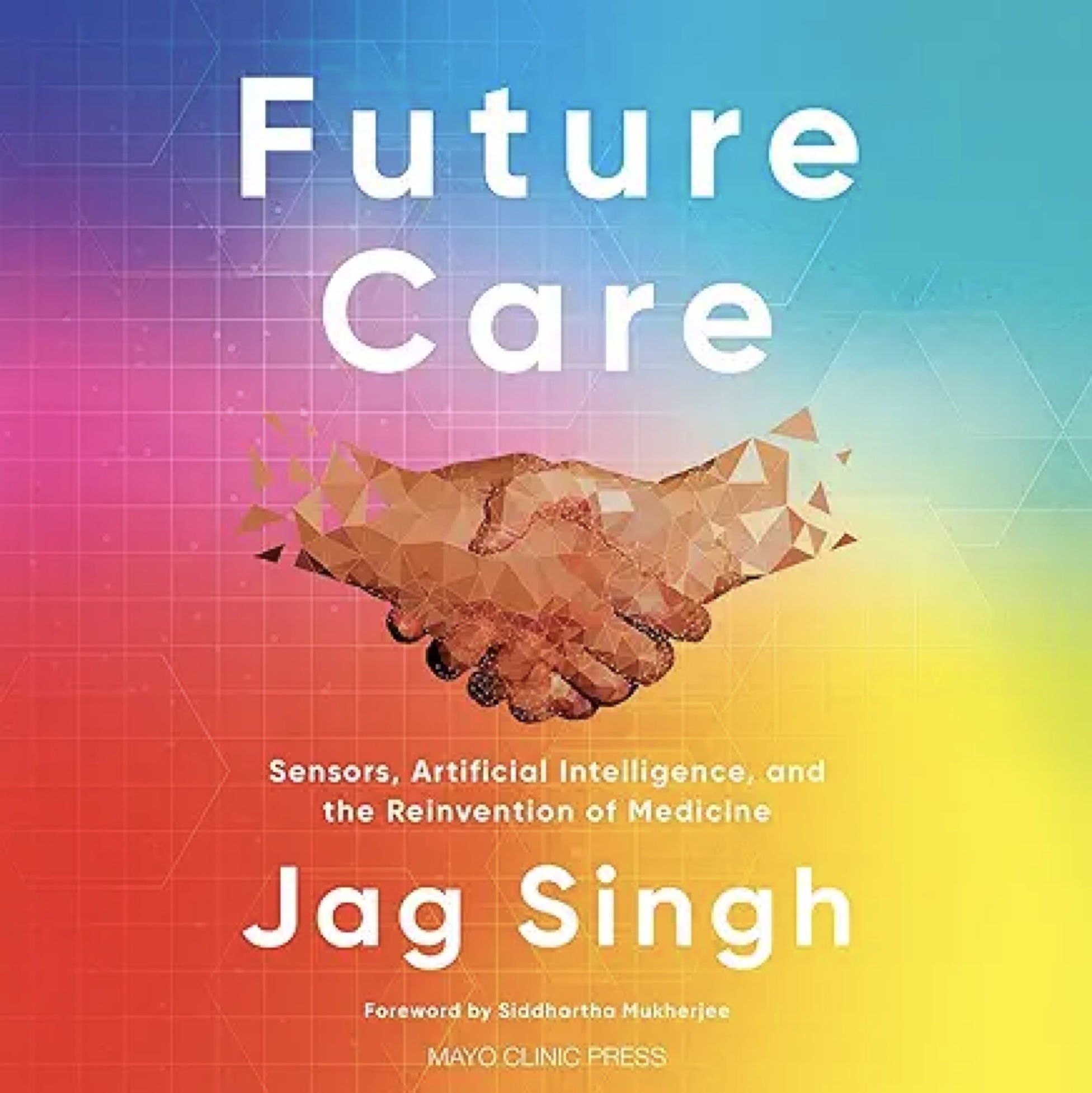
Future Care: Sensors, Artificial Intelligence, and the Reinvention of Medicine by Jag Singh takes a look at the current status of sensors and electronic medical records and shows us the future of health care where the focus is on staying healthy rather than treating disease. There are some barriers to a future that features continuous monitoring and treatment of our entire body by unobtrusive wearables and Jag lets us know what they are. If you have a body that you want to keep healthy, this book is for you.
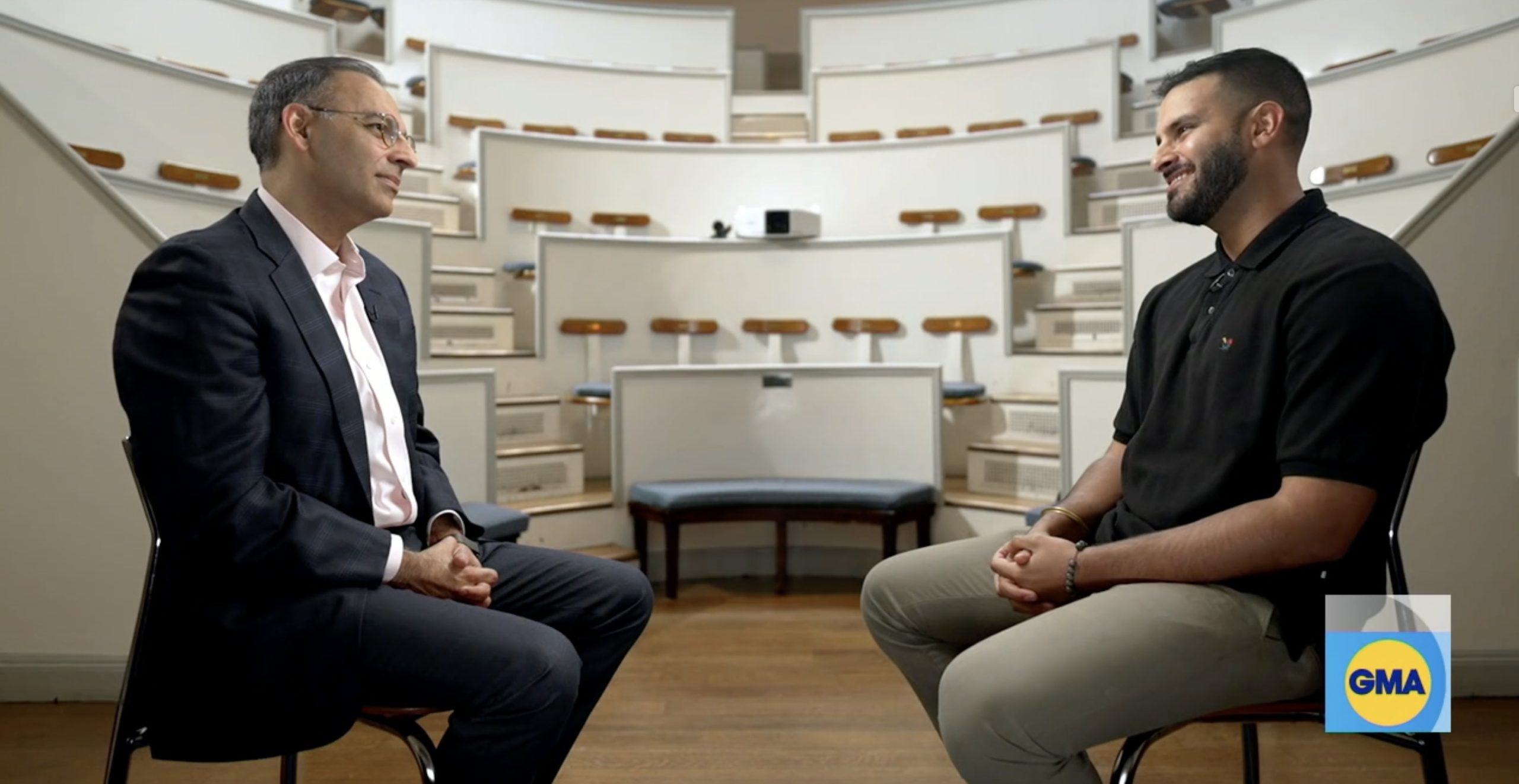
You can start with his interview by his son on Good Morning America. The future of medicine and health care in a post-pandemic world
Introduction
- Jag tells of his experience being hospitalized with a serious case of COVID-19. Here he saw first hand the trend toward more virtual care even in the hospital and more so once he was sent home. The future of health care is virtual. It was already on the way, but the pandemic jump started the trend. There is more focus on wellness and prevention as well with a shift in hospital care to the home.
- Compared to other developed countries, healthcare in the US features lower quality and less cost-effective care. Cost for drugs, devices, and procedures are mush higher and people are less satisfied. At $4 trillion a year, health care accounts for one fifth the US GDP. The conversation is around data, wearables, sensors, and AI. As the number of older people grows we are looking at a tsunami of sicker and older patients.
Part I: Sensors
1. Making Sense of Sensors
- Our body has sensors for every sense and virtually every cell. We also have many digital sensors that can be worn or implanted. The goal is to use such sensors to self-monitor and self-correct our bodies from disease states and to avoid invasive procedures provided by surgeons. As sensors advance, they can provide continuous information and take action as needed. This is important as necessary medical interventions do not line up with trips to the doctor.
2. Doc-In-The-Box
- Modern smartphones have joined a host of wearable sensors that continuously gather data and transmit it for analysis and informing the owner. They already make for excellent heart monitors. The competition in this market is pushing innovation at a rapid pace.
- While implants are part of this market, the developmental emphasis is on non-invasive devices. These devices don’t lie, unlike patients, and are far superior to patient memory. Other key issues are the integration of these devices into the larger health care picture and the affordability that can take them beyond the well off early adopters.
3. The Failing Heart, The Dying Patient
- Heart failure affects more than 6.5 million Americans at a cost of $40 billion a year and growing. Many only see a doctor after they go to the emergency room due to a significant cardiac event and most never bounce back to where they were before the event. Virtual sensor care offers hope and some of the technology is already here in the form of implantable pace makers and defibrillators.
- A common cause of setbacks is failure to adhere to medicines and procrastination. To prevent the time lag between a sensed event and treatment, some devices can alter medication doses in real time. This is already possible for insulin, blood pressure, and pulmonary artery pressure. Some sensors can report problems to patients who can then take action as long as they are properly educated. This kind of care is totally personalized and can dramatically lower hospital admissions and damage to the heart.
4. The Smartwatch Era
- Each year, more of us are wearing devices such at Apple Watches and Fitbits that can continuously monitor many bodily functions. Both have already been part of large clinical tests. While they pick up a lot of symptoms, their primary short coming seems to be too many false positives. If they were used to alert doctors these false positives would be enough to overwhelm our medical system.
- Since everyone expects such wearables and the algorithms that analyze the data they generate to improve, it’s a matter of time until they are integrated into personal care. They have already saved lives by calling emergency help after detecting falls. They can also monitor sleep quality. Continuous reporting to a health care system can make for privacy issues and there is also the matter of equity as many people can’t afford them.
5. Continuous Care and Novel Sensors: A Recipe for Health
- Many sensors that continuously monitor our body’s fluids and rhythms are already available. Most report directly to smartphone apps but have yet to be integrated with our electronic medical records (EMRs). Common diseases that are already being continuously monitored include asthma, diabetes, a-fib, and diseases where electrolyte balance is an issue. With non stop feedback patients can take charge of their health. Sensors that prevent trips to the doctor can disrupt the health care system’s revenue stream.
Posted in Book Summaries, Business Books, Education Books, Leadership Books | Comments Off on Future Care – Book Summary







